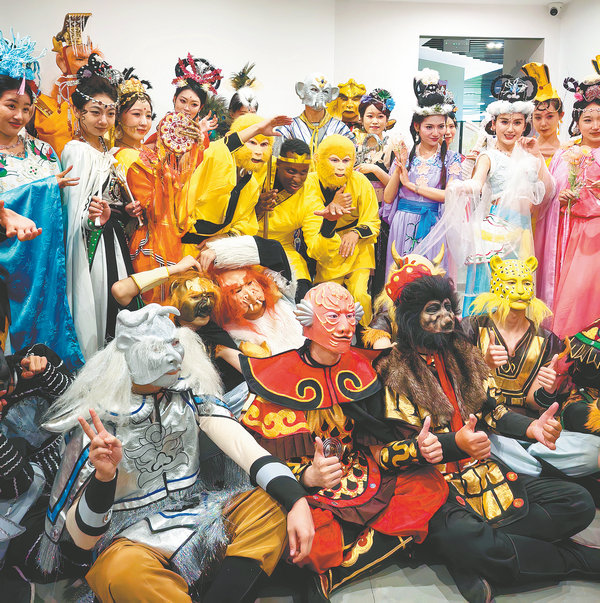

Ge Zhiyan, a tour guide at the Huai'an park, said: "Ultimately, we have to rely on our own culture to create unique characteristics. Journey to the West is a super IP with unlimited potential. We can learn from the advanced experience of international theme parks and draw on them to transform our cultural brands to create parks with distinct Chinese cultural characteristics that resonate with Chinese people."
Despite intermittent closures due to the pandemic, Ge said the Huai'an park has received some 2 million visitors since it opened, most of them in the 19 to 40 age group. Of these visitors, 40 percent were locals.
"The park endeavors to create an immersive visiting experience by integrating Journey to the West stories with every brick and tile at the venue to make each landscape and every corner tell a story," Ge said. "We are also promoting celebrity-endorsed check-in points and videos of interaction between characters and tourists to make the park more attractive."
In addition to adapting traditional icons, China's theme park industry is aiming to build attractions based on current cultural assets.
For example, a district in Xi'an, Shaanxi province, is themed on The Longest Day in Chang'an, a Chinese novel published in 2017 that was adapted into a TV series two years later. Tang Shiliangchen Cultural Tourism Development Co conceived the themed district, which opened last year in Xi'an. The company said the district received more than 2 million visitors in its first year of operations and has attracted more than 11 billion hits on online platforms.
"The Longest Day in Chang'an themed district in Xi'an is just a miniature version of a theme park, so the use of technology is a little thin," Zhang Zheng said.
"But I'm sure China's theme parks will gradually find a way to create unique and immersive experiences for visitors by tapping into the country's rich cultural heritage."
Contact the writers at yangran1@chinadaily.com.cn